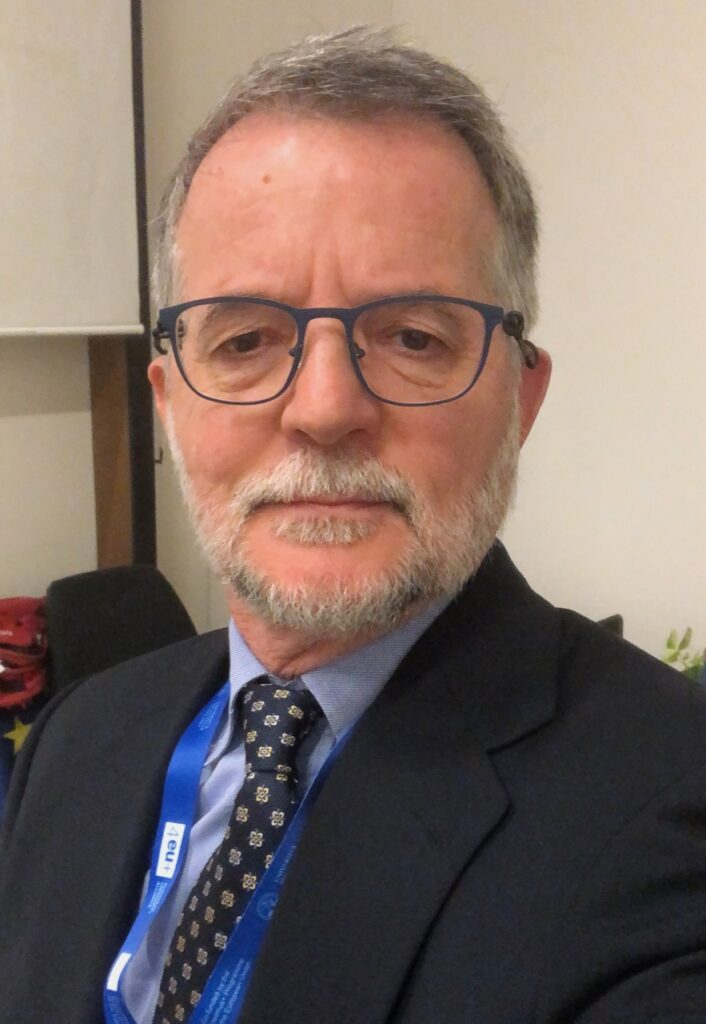
Luigi Guzzo joined the Physics Department “Aldo Pontremoli” of La Statale as Full Professor in 2016, after serving for almost three decades in the faculty of the National Institute for Astrophysics (INAF). During that period he was also Adjunct Professor of Cosmology at the University of Milano Bicocca (2009 – 2016). Currently, he is also affiliated to INAF and INFN.
Research Interests
I am a cosmologist, interested in both observations and interpretation of galaxy clustering. While originally trained in classical experimental astronomy, I became more and more interested in the modelling and interpretation of clustering in galaxy surveys using analytical and numerical techniques, as a prime way to test of the cosmological model. My first significant contributions to this field came from surveys of galaxy clusters.
In 2012 I was awarded by the European Research Council a 5-year ERC Advanced Grant to develop Darklight, a project aimed at expanding our ability to analyse and interpret the data from galaxy redshift surveys. This allowed me to build an international research team where experimentalists and modellers worked together to understand the Universe through the analysis of galaxy maps. The observational backbone of Darklight was provided by the VIMOS Extragalactic Redshift Survey (VIPERS), the largest survey ever performed with the ESO Very Large Telescope, which I coordinated between 2008 and 2015. Collecting close to 100,000 redshifts of galaxies with 0.5<z<1.2 and high sampling density, VIPERS pushed the detailed mapping of the galaxy distribution to the unprecedented epoch when the Universe was only half its current age. Including comprehensive multi-band ancillary photometry from the CFHTLS survey, VIPERS represents an ideal higher-redshift counterpart of classic local-Universe maps (as the Sloan Digital Sky Survey), allowing us to trace galaxy and structure evolution over cosmic time.
Darklight developed the statistical techniques required to analyse the VIPERS data and extract the values of cosmological parameters, as in particular the growth rate of cosmic structure. The latter, can be derived by measuring the so-called Redshift-Space Distortions (RSD) in the observed clustering of galaxies. My 2008 work on RSD contributed to establishing this effect as a primary technique in the quest for the origin of cosmic acceleration, showing how future surveys could use RSD to distinguish dark energy from deeper modifications of Einstein’s theory of gravity.
I championed the use of RSD as a key gravity/dark-energy probe in the SPACE proposal submitted in 2007 (led by A. Cimatti) to the ESA Cosmic Vision program, and successfully selected to become Euclid, after merging with the former DUNE imaging concept. Successfully launched in July 2023, Euclid is going to spend six years surveying 15,000 square degrees of extragalactic sky in both imaging and spectroscopy, mapping the large-scale distribution of luminous and dark matter. These will yield unprecedented measurements of the dark energy equation of state, the growth rate of cosmic structure and the sum of neutrino masses, probing the foundations of the Lambda-CDM model. As a founder of Euclid and one of the Science Coordinators of the mission, I am deeply involved in the scientific analysis of the early data and in the coordination of various activities of the Euclid Consortium. In this respect, with my group we recently started exploring the application of Machine Learning techniques to improve our understanding of the data and refine cosmological inference, in a joint effort with the Department of Computer Science of UniMI.